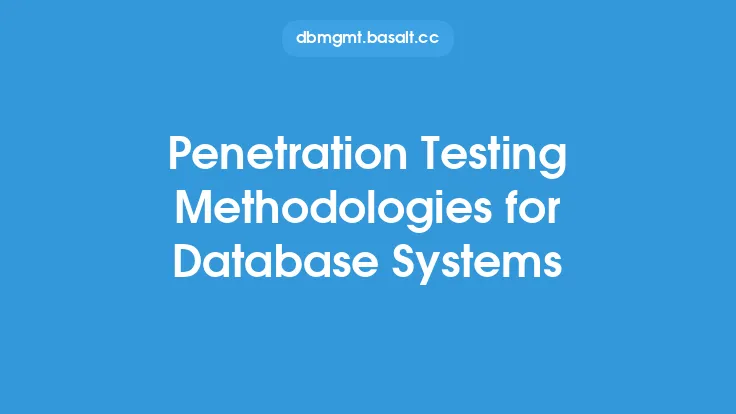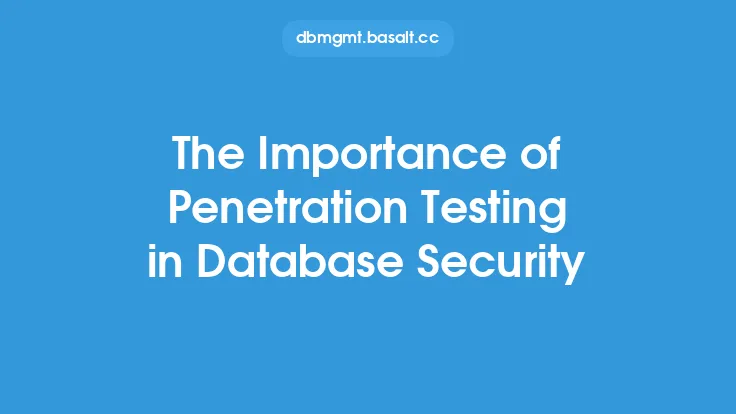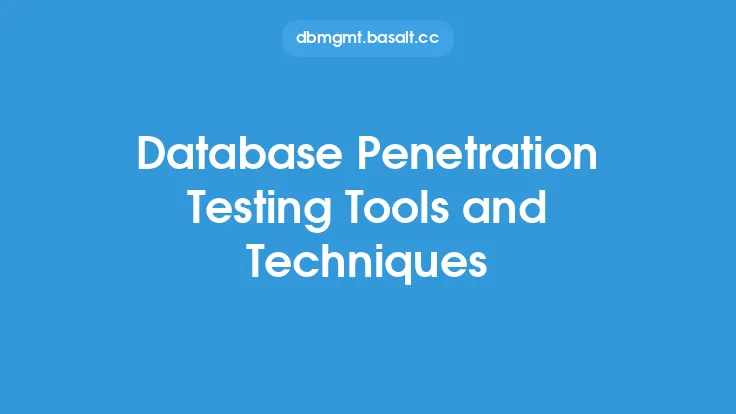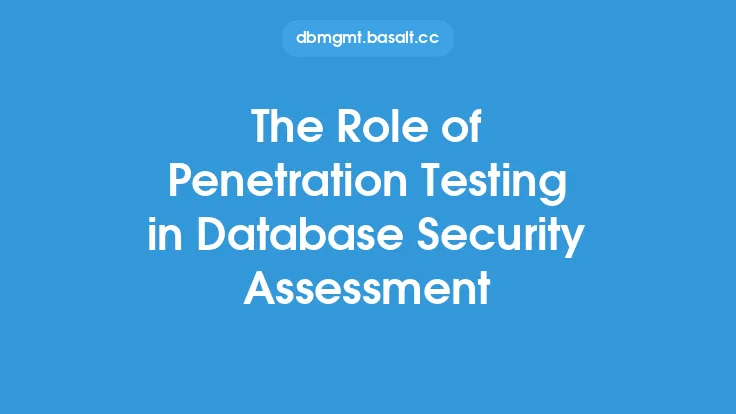Penetration testing is a crucial aspect of database security, as it helps identify vulnerabilities and weaknesses that could be exploited by attackers. Database vulnerabilities can be particularly damaging, as they can provide unauthorized access to sensitive data, disrupt business operations, and compromise the integrity of the database. In this article, we will delve into the world of penetration testing for database vulnerabilities, exploring the various types of vulnerabilities, testing methodologies, and best practices for identifying and remediating these vulnerabilities.
Introduction to Database Vulnerabilities
Database vulnerabilities can arise from a variety of sources, including poor database design, inadequate security configurations, and flaws in the database management system itself. Some common types of database vulnerabilities include SQL injection, cross-site scripting (XSS), and buffer overflow attacks. SQL injection attacks, for example, occur when an attacker is able to inject malicious SQL code into a database, allowing them to extract or modify sensitive data. XSS attacks, on the other hand, involve injecting malicious code into a database in order to steal user credentials or take control of user sessions. Buffer overflow attacks, meanwhile, involve overflowing a database buffer with malicious code, allowing an attacker to execute arbitrary code on the database server.
Types of Database Vulnerabilities
There are several types of database vulnerabilities that penetration testers should be aware of. These include:
- Configuration vulnerabilities: These occur when a database is not properly configured, leaving it open to attack. Examples include using default passwords, failing to restrict access to sensitive data, and not enabling auditing and logging.
- Design vulnerabilities: These occur when a database is poorly designed, making it vulnerable to attack. Examples include using weak data types, failing to normalize data, and not using constraints to restrict data input.
- Implementation vulnerabilities: These occur when a database is not properly implemented, leaving it open to attack. Examples include using outdated software, failing to patch vulnerabilities, and not using secure communication protocols.
- Environmental vulnerabilities: These occur when a database is not properly integrated into its environment, leaving it open to attack. Examples include failing to restrict access to the database server, not using firewalls to protect the database, and not monitoring database activity.
Penetration Testing Methodologies
Penetration testers use a variety of methodologies to identify database vulnerabilities. These include:
- Black box testing: This involves testing a database without any prior knowledge of its configuration or design. The tester must use their skills and experience to identify vulnerabilities and exploit them.
- White box testing: This involves testing a database with full knowledge of its configuration and design. The tester can use this knowledge to identify vulnerabilities and exploit them.
- Gray box testing: This involves testing a database with some knowledge of its configuration and design. The tester may have access to certain documentation or personnel, but not complete knowledge of the database.
Tools and Techniques
Penetration testers use a variety of tools and techniques to identify database vulnerabilities. These include:
- Vulnerability scanners: These tools scan a database for known vulnerabilities and report on any that are found.
- Penetration testing frameworks: These tools provide a structured approach to penetration testing, including tools and techniques for identifying and exploiting vulnerabilities.
- SQL injection tools: These tools are used to identify and exploit SQL injection vulnerabilities.
- XSS tools: These tools are used to identify and exploit XSS vulnerabilities.
Best Practices for Penetration Testing
There are several best practices that penetration testers should follow when testing for database vulnerabilities. These include:
- Obtaining permission: Before testing a database, the tester must obtain permission from the database owner or administrator.
- Using safe testing practices: The tester must use safe testing practices to avoid causing damage to the database or its data.
- Respecting data privacy: The tester must respect the privacy of the data in the database and not disclose any sensitive information.
- Providing detailed reports: The tester must provide detailed reports of any vulnerabilities found, including recommendations for remediation.
Remediation and Mitigation
Once a database vulnerability has been identified, it must be remediated or mitigated to prevent exploitation. This can involve:
- Patching vulnerabilities: The database owner or administrator must apply patches to fix any known vulnerabilities.
- Configuring the database securely: The database owner or administrator must configure the database securely, including restricting access to sensitive data and enabling auditing and logging.
- Implementing secure coding practices: The database owner or administrator must implement secure coding practices, including using parameterized queries and validating user input.
- Monitoring database activity: The database owner or administrator must monitor database activity to detect and respond to any potential security incidents.
Conclusion
Penetration testing for database vulnerabilities is a critical aspect of database security. By identifying and remediating vulnerabilities, database owners and administrators can help prevent attacks and protect sensitive data. Penetration testers must use a variety of methodologies, tools, and techniques to identify vulnerabilities, and must follow best practices to ensure safe and effective testing. By working together, database owners and administrators can help ensure the security and integrity of their databases.





